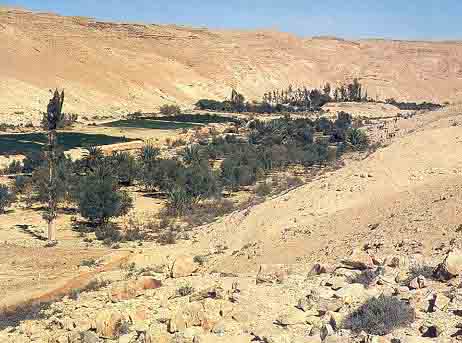Image Details

Zev Radovan
After three days of exploring Ain el-Qudeirat, T.E. Lawrence and Leonard Woolley identified this northern Sinai site as biblical Kadesh-Barnea, on the border of Edom. Only the oasis around Ain el-Qudeirat, they determined, had enough water and greenery (contrary to the Israelites’ complaints) to support a large community for a generation. Lawrence and Woolley believed that a fortress at the site (at right) possibly dated to the time of Moses and thus supported their identification of Ain el-Qudeirat as a well-fortified border town. The fortress has since been dated to the Iron Age II (tenth-seventh century B.C.E.); no finds dating to the time of the Exodus have been discovered at Ain el-Qudeirat. Yet, because of the site’s location on two important ancient routes, the abundant water at the oasis and the correspondence with the Biblical geography, Ain el-Qudeirat continues to be accepted as the most likely candidate for Kadesh-Barnea.
